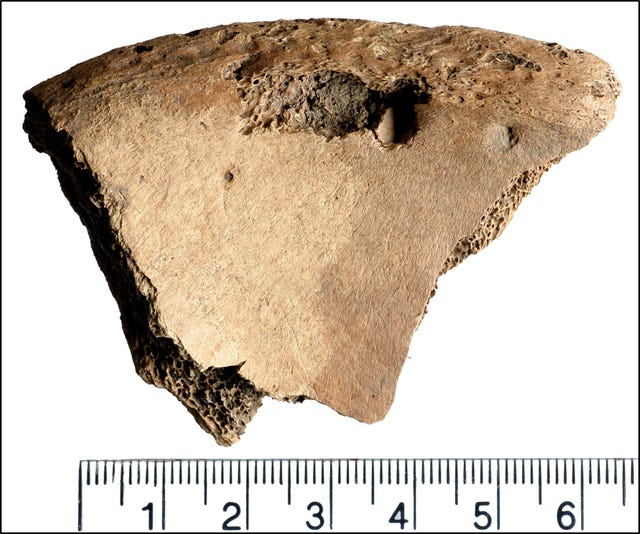Bite marks show evidence of gladiators fighting lions, experts say
The discovery on remains found in York highlight how humans fighting large cats was entertainment on the edge of the Roman empire.

Bite marks found on a Roman-era skeleton in York are the first physical evidence that humans fought animals in gladiatorial combat, experts have said.
The discovery was made in a cemetery which was believed to contain the remains of gladiators, with bite marks from a large cat found on the pelvis.
Previously, images of gladiators being mauled by lions have been found in mosaics and on pottery, but this was the first time skeletal evidence of the fighting has been found.
Academics said that the bones showed distinct lesions and, when compared with modern zoological teeth marks, they were identified as coming from a large cat.
Professor Becky Gowland, from Durham University’s Department of Archaeology, said: “This is an exciting new analysis and the first direct evidence of human-animal spectacle in Roman Britain and beyond.
“It also raises important questions about the importance and transport of exotic animals across the Roman Empire.”
The find sheds more light on Roman Britain and how people across the empire were entertained.

More research will follow into how lions came to be kept in Britain, and the lives of gladiators on the edge of the empire.
The research was carried out by an international team of bone specialists, osteologists, and archaeologists, led by Tim Thompson, professor of anthropology and vice president for students and learning at Maynooth University, Ireland.
He said: “For years, our understanding of Roman gladiatorial combat and animal spectacles has relied heavily on historical texts and artistic depictions.
“This discovery provides the first direct, physical evidence that such events took place in this period, reshaping our perception of Roman entertainment culture in the region.”
The research is published in the journal PLOS One, and was a collaboration between institutions including Maynooth University, Cranfield University, Durham University, the University of York, King’s College London, York Archaeological Trust, now known as York Archaeology, and York Osteoarchaeology.





